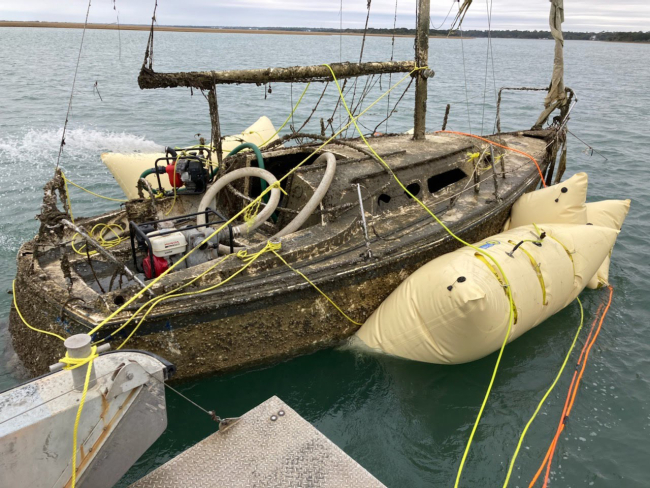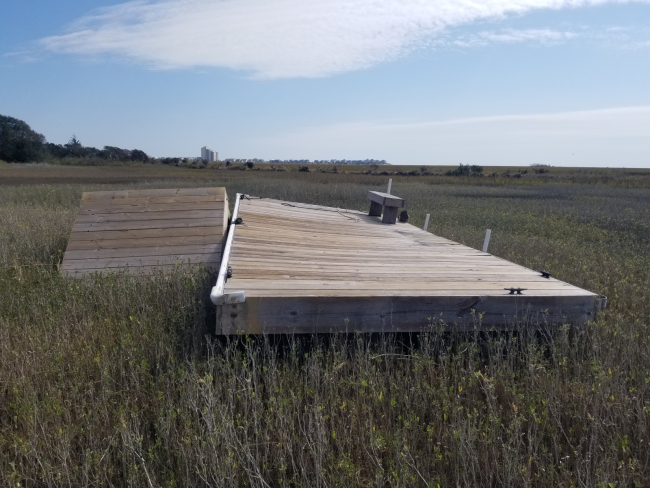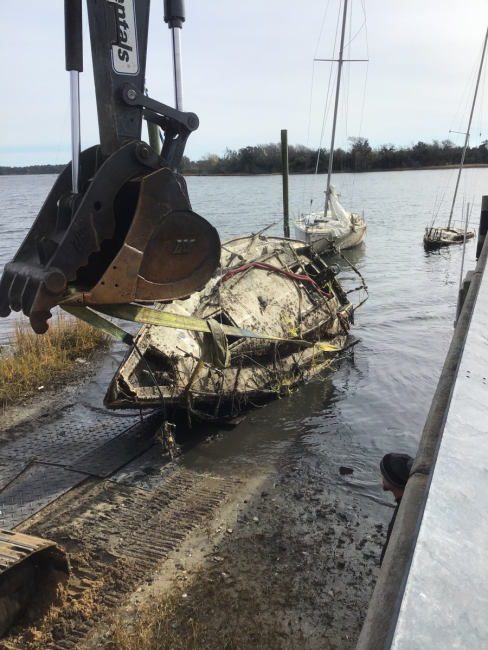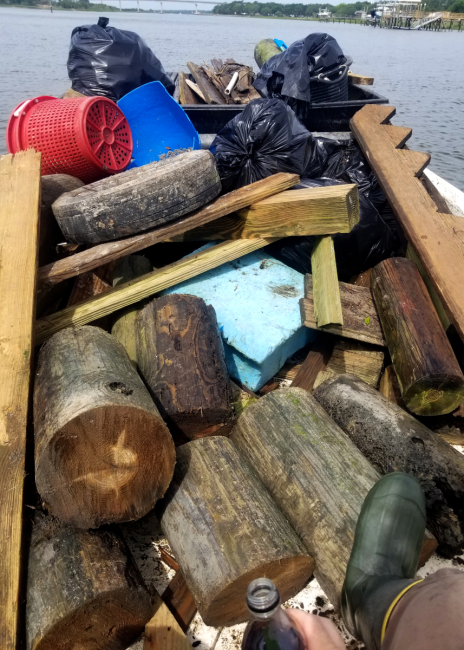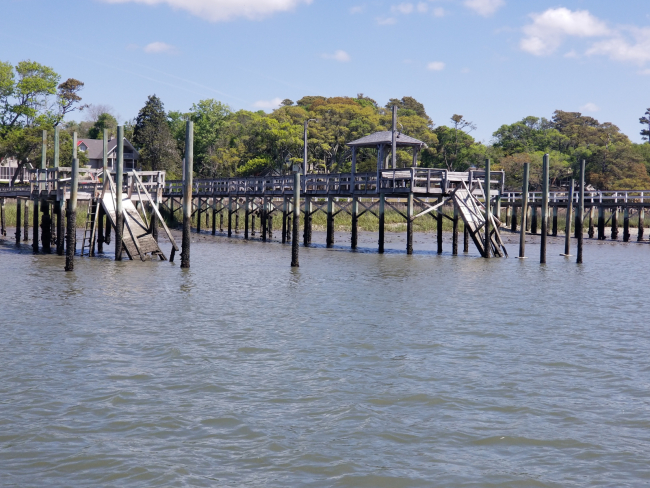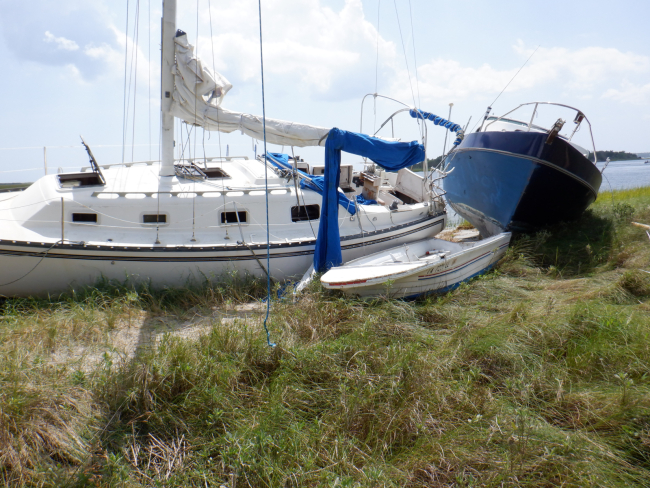Guest blog by: Ted Wilgis, Coastal Scientist, North Carolina Coastal Federation
With water streaming from its portholes, the heavily encrusted hull of the sailing vessel finally broke the surface of Masonboro Channel, where it wallowed in the waves. After several long hours, the crew from Mainstream Commercial Divers successfully refloated the vessel, which had been submerged since Hurricane Florence struck the North Carolina coast in 2018.
Further down the coast, near the South Carolina state line, a four-person debris crew motored out from the boat ramp towards the marsh across the Intracoastal Waterway near Sunset Beach. As their skiff nudged up against the marsh bank, the crew was shocked at the debris field left behind by Hurricane Ian’s surge and winds earlier this year.
These scenes provide a clear picture of the ongoing cleanup efforts along North Carolina’s coast. Since 2019, nearly 100 abandoned and derelict vessels (ADVs) have been removed, along with tons of marine debris collected by commercial fishers. The total yield is an amazing 1,800 tons, or 3.6 million pounds, of debris cleaned out of coastal waters and habitats. Many of these projects were made possible through grants to the North Carolina Coastal Federation (Federation) from the National Fish and Wildlife Foundation and the NOAA Marine Debris Program, including vessel removals in hurricane-impacted counties, vessel debris removals from the Outer Banks, and hurricane debris cleanups in southeastern North Carolina. Other marine debris removal efforts were supported with funding from the Emergency Watershed Protection Program and the North Carolina General Assembly. Project partners, North Carolina Division of Coastal Management, North Carolina Division of Marine Fisheries, North Carolina Wildlife Resources Commission (NCWRC), and local governments have also provided invaluable support.
While these removal efforts highlight the significant progress made by the project, marine debris continues to be a problem. Our fisher crews continue to find lumber, newly constructed pier decks, and even full floating docks that were not constructed to withstand the day-to-day pressures of wakes and wind, let alone major storms. While cleaning up lumber, polystyrene, floats, and other debris, our crews have observed many more docks and piers damaged and weakened by past storms. They know that after the next King Tide, Nor’easter, or big boat wake, they will be cleaning up more marine debris. Similarly, the NCWRC, Federation, and local municipalities together have removed hundreds of ADVs, enacted local ADV ordinances, and strengthened enforcement and removal authority. However, newly abandoned vessels continue to appear, not only because of storms, but also through abandonment of unwanted vessels.
Cases like these are frustrating, but there are tools, resources, and growing support from the public, agencies, and lawmakers to address these marine debris prevention issues. These are also recommended actions in the North Carolina Marine Debris Action Plan, for which the Federation leads the implementation. In an effort to support homeowners, the Federation is working with regulatory agencies that permit waterfront structures to provide resources needed to repair or remove damaged structures. For ADVs, tools that provide resources on how to acquire insurance for vessel wreck or salvage removal and a state-sponsored vessel “turn in” program are being considered.
Momentum is building for the prevention of marine debris and ADVs, and North Carolina is well-situated to put strong measures in place for the future of our coastal habitats and waters. To learn more about the progress of this work and the Federation’s vision of a coast that is free of marine debris, visit the Federation’s website.

